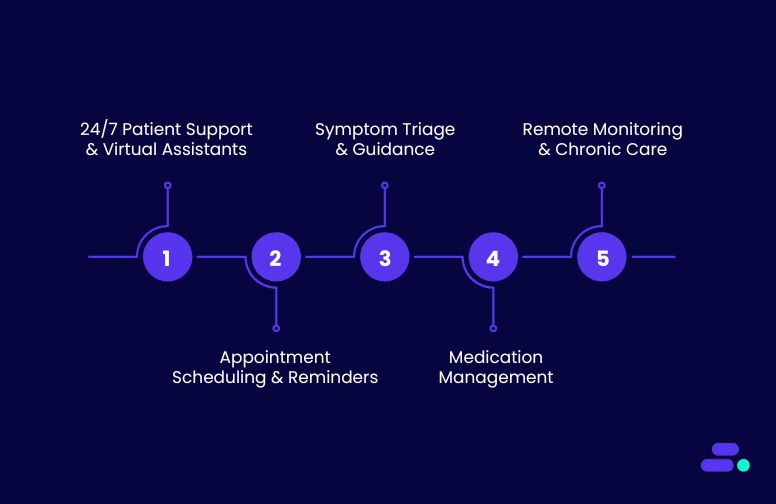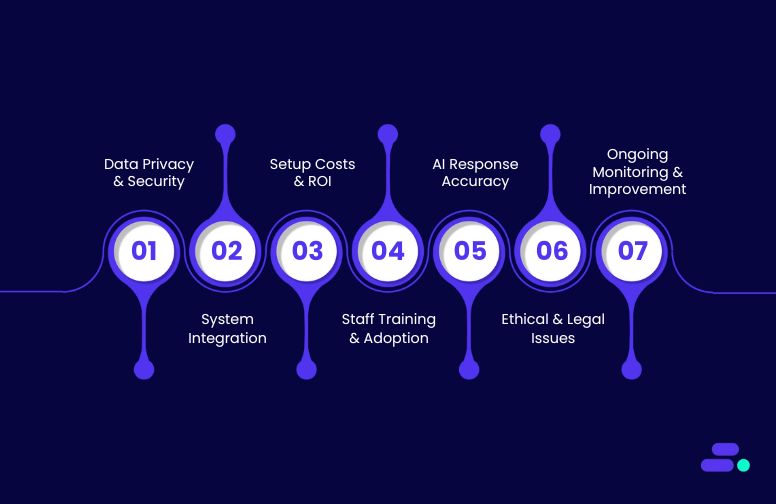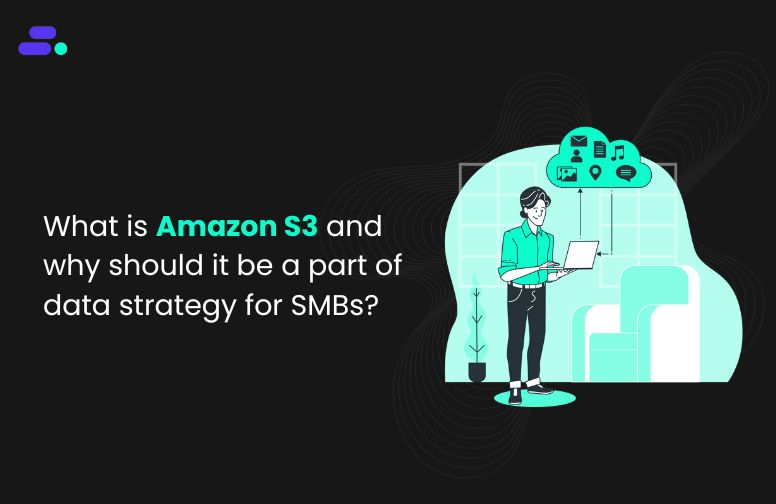This is a div block with a Webflow interaction that will be triggered when the heading is in the view.

Modernize your cloud. Maximize business impact.
According to Gartner (2024), 70% of SMBs that engaged in cloud modernization reported measurable improvements in operational efficiency and cost savings within the first year. This significant finding highlights why adopting cloud technology is no longer optional for small and medium businesses (SMBs). It is essential for maintaining competitiveness and enabling growth.
Yet modernizing cloud infrastructure comes with considerable challenges, particularly around security, compliance, and managing costs. Simply migrating to the cloud is not enough. The AWS well-architected framework offers SMBs a clear, proven approach to designing and operating cloud environments that are secure, scalable, and efficient while adhering to industry best practices.
This structured framework guides businesses beyond basic migration, helping them build resilient and compliant cloud solutions that align with their unique needs and industry requirements.
Key takeaways:
- AWS’s six Well-Architected Framework pillars help SMBs build secure, cost-efficient, and scalable cloud environments.
- SMBs must adopt the AWS Well-Architected Framework to balance performance, cost, and security in cloud modernization.
- Each of the six AWS Well-Architected pillars, from operational excellence to sustainability, has its real-world SMB impact.
- Cloudtech helps SMBs apply AWS best practices to modernize, secure, and optimize cloud environments for lasting success.
- Unlock the roadmap to smarter, safer, and leaner cloud operations with the AWS Well-Architected Framework pillars for SMBs.
Why do SMBs need the AWS Well-Architected Framework pillars?
For small and mid-sized businesses, every cloud decision carries weight. Unlike large enterprises with massive budgets and teams, SMBs need cloud systems that are secure, cost-efficient, and resilient by design, without the overhead of constant firefighting or rework. That’s exactly what the AWS Well-Architected Framework (WAF) delivers.
The framework’s six pillars help SMBs strike the right balance between agility and control. It ensures that their cloud investments drive business outcomes, not just infrastructure uptime.
Why it matters for SMBs:
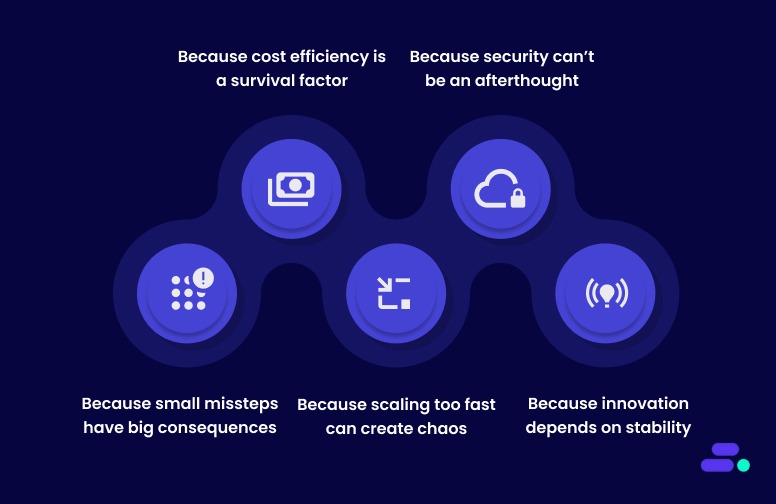
1. Because small missteps have big consequences: For SMBs, one outage or security lapse can cause real financial and reputational damage. The Reliability and Security pillars ensure workloads stay protected, recover quickly, and meet compliance needs, without needing an enterprise-sized ops team.
2. Because cost efficiency is a survival factor: Unlike large organizations, SMBs can’t afford to overspend on idle resources. The Cost Optimization pillar helps right-size workloads, automate scaling, and use pricing models that match actual usage, freeing up budget for innovation.
3. Because scaling too fast can create chaos: Rapid growth is great, but it often exposes weak infrastructure foundations. The Operational Excellence and Performance pillars guide SMBs in building predictable, scalable systems that grow with customer demand instead of breaking under it.
4. Because security can’t be an afterthought: Many SMBs assume cloud security “just comes with AWS.” The truth is, it requires the right IAM policies, encryption standards, and monitoring, which are areas directly addressed by the Security pillar to protect customer data and ensure compliance.
5. Because innovation depends on stability: SMBs can’t modernize applications or experiment with AI if their foundation isn’t stable. By adhering to the WAF pillars, SMBs gain the confidence to innovate faster, adopt new AWS services, and continuously improve without disrupting existing operations.
SMBs don’t need enterprise-scale architectures. They need well-architected ones. The AWS Well-Architected Framework gives growing businesses the structure to operate smarter, safer, and leaner in the cloud.
With the right partner like Cloudtech, these pillars become a roadmap to sustainable modernization, one that balances performance, cost, and long-term growth.
Suggested Read: Effective Cloud Migration Strategies for Small Businesses

The 6 pillars of the AWS well-architected framework
The AWS well-architected framework is built around six core pillars that guide organizations in designing and operating cloud systems effectively. Each pillar addresses a key area critical to building secure, efficient, and resilient cloud environments.
1. Operational excellence
Operational excellence is about effectively running and managing cloud workloads while continuously improving processes to deliver business value. For SMBs, it means building adaptable operations that support growth, compliance, and agility.
Key aspects:
- Automate operations as code to reduce errors and increase consistency
- Make frequent, small, reversible changes to minimize risks
- Refine procedures regularly based on real-world feedback
- Design systems to anticipate and handle failures gracefully
- Learn from operational failures to improve processes
SMBs can use AWS Systems Manager to automate operational tasks and manage infrastructure as code. AWS CloudTrail for logging and auditing API activity. Amazon CloudWatch for monitoring and alerting on operational metrics.
Best practices: Operations teams should deeply understand business and customer needs to align procedures with desired outcomes. It’s essential to create, refine, and validate processes for handling operational events effectively while collecting metrics to measure success.
Operations should be designed to adapt over time, reflecting changes in business priorities, customer needs, and evolving processes. Lessons learned from past performance and failures should be incorporated continuously to improve efficiency and deliver consistent business value.
Tip: For SMBs looking to improve operational excellence, Cloudtech’s AWS foundations program offers a rapid, hands-on approach to build secure, compliant, and efficient AWS environments.
2. Security
For SMBs in healthcare, fintech, and other regulated sectors, security is a non-negotiable requirement in cloud modernization. The Security pillar ensures cloud environments protect sensitive data while meeting strict compliance standards, without slowing down business operations.
Key aspects:
- Enforce granular access controls with AWS Identity and Access Management (IAM) tailored to SMB team roles
- Implement end-to-end encryption using AWS Key Management Service (KMS) to protect data at rest and in transit
- Continuously monitor environments with AWS Security Hub and AWS CloudTrail for early threat detection
- Automate patch management and vulnerability scanning to reduce exposure
- Develop incident response workflows aligned with regulatory requirements
To strengthen security, SMBs can use AWS IAM for strict access controls, AWS KMS for managing encryption keys, Amazon GuardDuty for proactive threat detection, and AWS Security Hub to consolidate security alerts across their AWS environment.
Best practices: Security practices should focus on controlling access, monitoring for incidents, and protecting the confidentiality, integrity, and availability of data. Organizations should establish and regularly practice well-defined processes for responding to security events.
Automation should be leveraged to enforce security best practices and maintain system-wide visibility. Cloud-native security features should be used to reduce operational overhead, allowing teams to focus on securing workloads effectively and maintaining compliance.
3. Reliability
Reliability ensures that cloud systems can recover quickly from failures and continue operating smoothly. For SMBs, this means designing environments that minimize downtime, support business continuity, and scale with demand.
Key aspects:
- Automatically recover from failures using AWS services like AWS Auto Scaling and Elastic Load Balancing
- Regularly test recovery procedures to verify backup and failover effectiveness
- Scale horizontally to distribute load and avoid single points of failure
- Manage changes through automation tools such as AWS CloudFormation to reduce human errors
- Build resiliency directly into workloads to withstand disruptions without service impact
By using AWS Auto Scaling and Elastic Load Balancing, SMBs ensure their applications stay available under varying loads, while Route 53 supports DNS failover to maintain uptime during regional outages
Best practices: Reliable workloads begin with solid foundational requirements, such as sufficient network and compute capacity. Architects should minimize risk through loosely coupled components, graceful degradation, fault isolation, automated failover, and disaster recovery strategies.
Anticipating changes in workload demand and system updates is critical to maintaining consistent performance. Recovery procedures should be regularly tested, and horizontal scaling should be used to ensure high availability and resilience against failures.
4. Performance efficiency
Performance efficiency means building cloud solutions that deliver optimal speed and responsiveness while scaling seamlessly with business growth. For SMBs, it is about using AWS innovations, like serverless computing and global infrastructure, to maximize user experience and agility, without unnecessary cost or complexity.
Key aspects:
- Democratize advanced technologies by using managed AWS services that simplify complex infrastructure
- Expand globally within minutes by deploying applications across multiple AWS regions
- Adopt serverless architectures like AWS Lambda to reduce infrastructure management and scale automatically
- Experiment frequently with new features and architectures to innovate faster
- Consider mechanical sympathy, design systems that work in harmony with the underlying hardware for optimal performance
- Use data-driven insights to continuously optimize architecture and resource allocation
SMBs can boost performance and reduce costs by adopting serverless architectures with AWS Lambda, containerizing applications using Amazon EKS, and accelerating content delivery via Amazon CloudFront.
Best practices: Performance should be guided by continuous monitoring and data-driven insights. Regular reviews of architecture and configurations help take advantage of evolving cloud capabilities. Workloads should be optimized using caching, compression, and other trade-offs, balancing performance, consistency, and speed.
Experimentation with technologies and architectural approaches is encouraged to identify the most efficient solutions. Using serverless and managed services can further improve efficiency and reduce operational overhead.
Tip: Cloudtech supports SMBs in modernizing applications with performance-optimized AWS architectures through its application modernization services.
5. Cost optimization
Cost optimization means continuously aligning cloud spending with business priorities to get maximum value without overspending. For SMBs, it’s about managing usage smartly, paying only for what’s needed, avoiding waste, and balancing cost against speed and innovation demands.
Key aspects:
- Implement cloud financial management to monitor and control expenses accurately
- Adopt a consumption-based model to pay strictly for resources used, preventing overprovisioning
- Measure overall efficiency by tracking resource utilization and identifying waste
- Attribute costs across teams or projects to improve budgeting and accountability
- Optimize spending based on whether speed to market or cost savings is the priority
AWS Cost Explorer and Budgets provide SMBs with insights and alerts to control expenses, while Reserved Instances and Savings Plans offer savings for consistent workloads.
Best practices: Organizations should implement strong cloud financial management practices and continuously track spending. Adopting a consumption-based model ensures payment only for resources used, while efficiency metrics help identify cost-saving opportunities.
Using managed services reduces undifferentiated operational work. Design decisions should balance cost, performance, and speed to market, ensuring that spending aligns with business priorities without over-provisioning resources.
6. Sustainability
Sustainability in the cloud means minimizing environmental impact while maintaining performance and scalability. For SMBs, this involves understanding their cloud footprint and actively managing resources to support greener business practices without compromising growth.
Key aspects
- Understand the environmental impact of cloud usage by measuring carbon footprint and energy consumption
- Establish clear sustainability goals aligned with business values and regulatory expectations
- Maximize resource utilization to avoid waste and reduce energy consumption
- Using AWS managed services, which are designed for efficient, eco-friendly operation
- Reduce downstream impacts by optimizing data transfer, storage, and processing workloads
- Continuously optimize workload components that consume the most resources for better efficiency
SMBs can monitor their environmental impact using AWS’s Customer Carbon Footprint Tool and benefit from AWS’s commitment to running energy-efficient, renewable-powered data centers.
Best practices: Sustainable workloads start with understanding environmental impact and setting measurable goals. Resource usage should be optimized by scaling according to demand, removing unused assets, and using efficient hardware, software, and managed services.
Architectural patterns that improve utilization and reduce waste should be applied, while lifecycle automation for development, testing, and production environments helps minimize the environmental footprint. Continuous analysis of data and workload patterns can uncover additional opportunities to improve sustainability over time.
Cloudtech helps SMBs adopt sustainable cloud modernization strategies through its cloud infrastructure optimization services, balancing performance, cost, and environmental responsibility.
Also Read: The 7 Rs of cloud migration: a comprehensive guide for SMBs

Challenges of implementing AWS Well-Architected Framework pillars (and how to avoid them)
Adopting the AWS Well-Architected Framework (WAF) sounds straightforward until real-world constraints like limited staff, legacy workloads, and budget pressure come into play.

For SMBs, the biggest challenge isn’t understanding the six pillars. It’s operationalizing them consistently across cloud environments without losing agility.
Below are the most common pitfalls SMBs face, and how to sidestep them:
1. Treating WAF as a one-time checklist
Many SMBs approach WAF reviews as a compliance task done once a year. The problem? Cloud workloads evolve—what was “well-architected” six months ago may already be outdated.
How to avoid it: Make it an ongoing practice, not a project. Set quarterly reviews, automate audits using AWS Trusted Advisor, and build small, repeatable improvement cycles into the DevOps pipeline.
2. Limited in-house AWS expertise
Small teams often lack deep AWS architectural experience, leading to partial or inconsistent adoption of the pillars, especially around security and cost optimization.
How to avoid it: Partner with an AWS-certified consultancy like Cloudtech. Their architects can perform a Well-Architected Review, identify misalignments, and guide remediation aligned with AWS best practices without overwhelming the internal staff.
3. Balancing innovation with cost control
It’s easy to over-engineer for performance and reliability, but that often leads to cloud sprawl and runaway costs.
How to avoid it: Leverage AWS Cost Explorer and Savings Plans to track and optimize spend continuously. Use the Cost Optimization pillar as a guardrail; every new service or experiment should have a clear cost-performance tradeoff plan.
4. Legacy workloads and technical debt
SMBs often modernize in phases, which means legacy systems coexist with new cloud-native apps, creating inconsistencies in architecture, monitoring, and reliability.
How to avoid it: Adopt a phased modernization approach: start by containerizing or rehosting legacy workloads, then layer in automation, monitoring, and resilience patterns over time. Cloudtech’s modernization framework helps streamline this transition with minimal disruption.
5. Lack of measurable KPIs
Without defined success metrics, it’s hard to prove the ROI of implementing the framework or justify ongoing investment.
How to avoid it: Establish clear KPIs per pillar. For example:
- Uptime % for Reliability
- Average response time for Performance
- Monthly spend variance for Cost Optimization
- Mean time to recovery (MTTR) for Operational Excellence
Measure, iterate, and align these metrics with business outcomes, not just infrastructure goals.
The AWS Well-Architected Framework isn’t just technical, but it’s cultural. SMBs that see it as a continuous discipline, supported by automation and expert guidance, gain a cloud foundation that’s not only stable and secure but strategically aligned with growth and innovation.
Also Read: AWS business continuity and disaster recovery plan

Implementing the AWS Well-Architected Framework with Cloudtech
Building a modern cloud architecture is about creating a foundation that’s secure, scalable, and adaptable to change. For most SMBs, balancing performance, cost, and resilience can feel overwhelming without deep AWS expertise or large internal teams.
Cloudtech simplifies this journey by applying AWS Well-Architected Framework pillars through an SMB-first approach, ensuring every environment is designed for agility, efficiency, and long-term growth, not just short-term fixes.
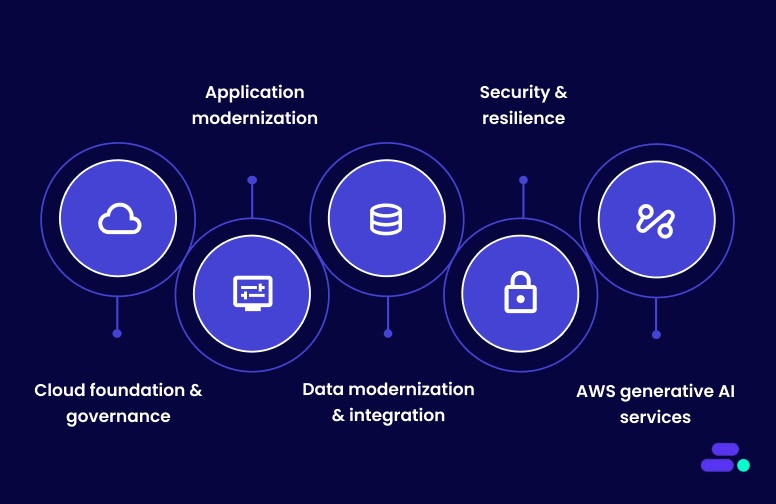
Alt text:Implementing the AWS Well-Architected Framework with Cloudtech
Key ways Cloudtech enables modern cloud architectures:
- Cloud foundation & governance: Cloudtech establishes secure multi-account environments using AWS Control Tower, AWS Organizations, and AWS IAM, ensuring governance, compliance, and cost visibility from the start.
- Application modernization: Using AWS Lambda, Amazon ECS, and Amazon EventBridge, Cloudtech modernizes legacy applications into serverless or container-based architectures that reduce operational overhead.
- Data modernization & integration: Cloudtech builds modern data platforms with Amazon S3, Amazon Redshift, AWS Glue, and Amazon Kinesis to unify data, enable real-time analytics, and prepare for AI-driven insights.
- Security & resilience: With AWS CloudFormation, AWS CDK, AWS CodePipeline, Amazon GuardDuty, AWS Backup, and Amazon Route 53, Cloudtech automates infrastructure delivery while ensuring continuous protection, fault tolerance, and cost efficiency.
- AWS Generative AI Services: Cloudtech enables SMBs to explore practical AI adoption through Amazon Q Business, Amazon Bedrock, and AWS data services, delivering use cases such as intelligent document processing, chat-based insights, and GenAI proof of concepts tailored for real ROI.
By combining automation, best practices, and deep AWS expertise, Cloudtech helps SMBs not just “move to the cloud,” but operate like cloud-native businesses, with infrastructure that’s secure, efficient, and ready to evolve with market demands.
See how other SMBs have modernized, scaled, and thrived with Cloudtech’s support →

Conclusion
For SMBs, modernizing cloud infrastructure is essential to stay competitive and grow securely. The AWS well-architected framework pillars offer a clear, proven way to build cloud environments that are secure, efficient, compliant, and cost-effective. This approach helps SMBs overcome challenges common in regulated industries like healthcare and fintech.
With Cloudtech’s expertise as an AWS Advanced Tier Partner, SMBs get expert guidance, rapid deployment options, and tailored strategies to make the most of their AWS cloud. Adopting the framework leads to better operational efficiency, scalable systems, stronger security, and cost savings while supporting sustainability goals.
Take the next step in your cloud modernization journey. Contact Cloudtech to schedule a Well-Architected Review and turn your AWS environment into a secure, scalable, and cost-effective platform for growth.
FAQs
1. How do Well-Architected reviews benefit SMB cloud environments?
Well-Architected reviews help SMBs identify weaknesses and risks in their cloud setups early. This ensures architectures stay secure, reliable, and cost-efficient, aligning with business goals. Regular reviews also enable continuous improvement as needs evolve.
2. What is the AWS Well-Architected Tool used for?
The AWS Well-Architected Tool automates the assessment of cloud workloads against AWS best practices. It helps SMBs uncover gaps, prioritize fixes, and track progress over time. This tool simplifies maintaining a strong and compliant cloud environment.
3. What is the difference between the AWS well-architected framework and the Cloud Adoption Framework (CAF)?
The well-architected framework focuses on technical best practices for building cloud infrastructure. In contrast, the Cloud Adoption Framework (CAF) covers the organizational, operational, and cultural changes needed for successful cloud adoption, including people and processes.
4. What is the value of the AWS well-architected framework for SMBs?
The framework offers SMBs a proven approach to design scalable, secure, and cost-effective cloud environments. It reduces risks and technical debt, helping businesses innovate faster and maintain compliance. This ensures cloud investments deliver lasting business value.
5. What are the benefits of having well-architected application workloads?
Well-architected workloads provide consistent performance, security, and scalability while optimizing costs. They reduce downtime and simplify maintenance, enabling SMBs to focus on growth and innovation. This foundation supports business agility and customer satisfaction.
6. Why is security one of the pillars of the well-architected framework?
Security is crucial because it safeguards sensitive data and systems from threats and breaches. For SMBs, this means meeting regulatory requirements and protecting business continuity. Strong security practices reduce risk and build customer trust.

Get started on your cloud modernization journey today!
Let Cloudtech build a modern AWS infrastructure that’s right for your business.

